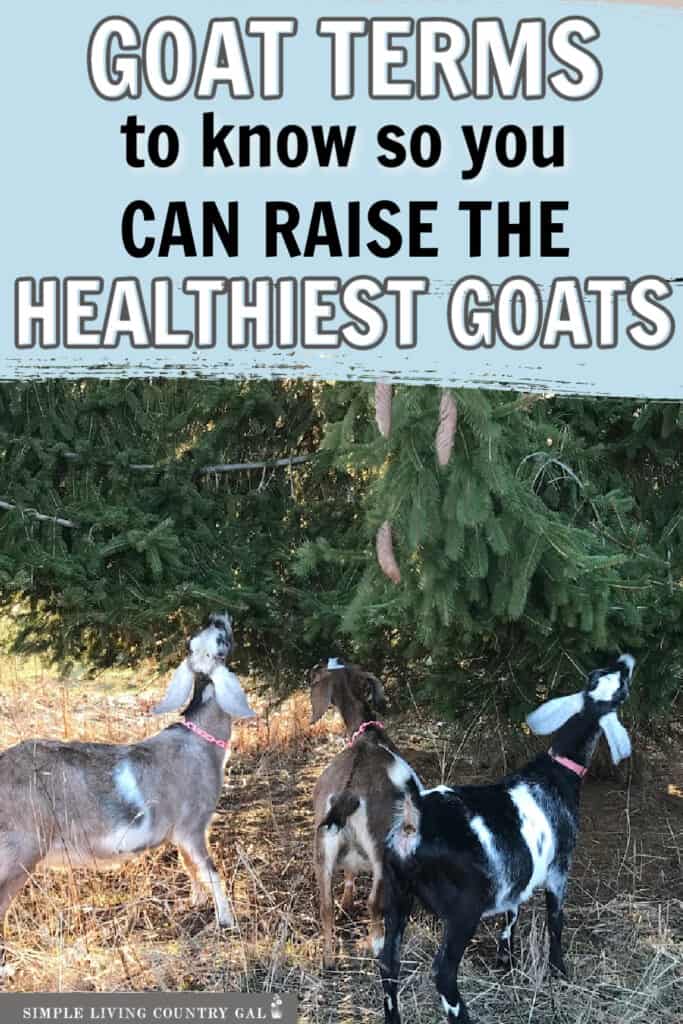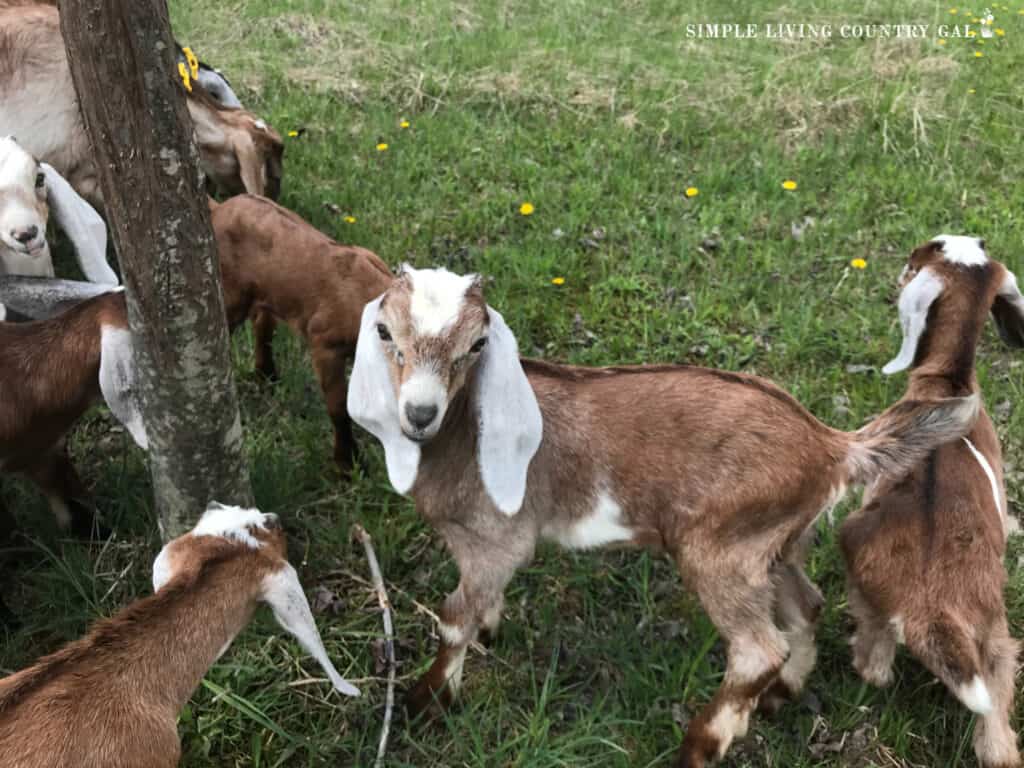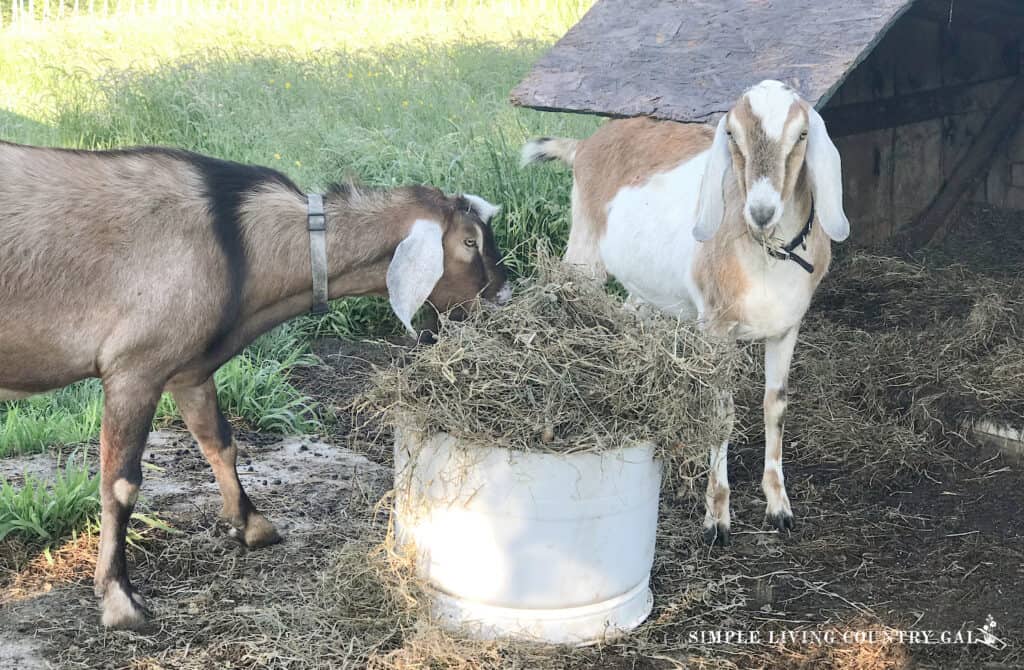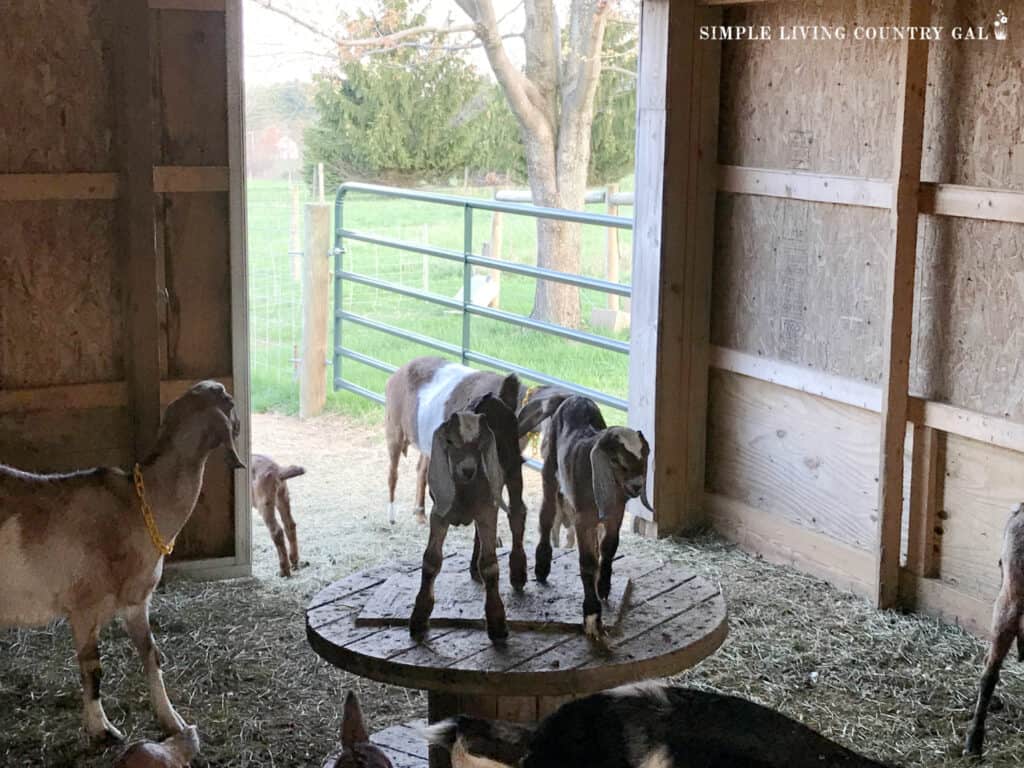goat terms
Getting started with anything new comes with it’s own vocabulary and nowhere is that more evident than with dairy goats. This article will introduce you to the most common, what they mean, and a few other tips along the way.
How to raise dairy goats: knowing the terms so you can understand the information more clearly while you are researching.

Goat terms can be overwhelming for new owners, but it’s important to understand them in order to properly care for your dairy goats. Whether you’re a seasoned farmer or just starting out, owning goats is a rewarding experience. However, if you’re not familiar with the livestock world, the terminology may seem like a foreign language. In this blog post, we’ll dive into the most commonly used terms and concepts related to goat ownership, such as wethers vs. bucks, breeding terminology, kidding (birthing) terms, and other practical information on regulating and caring for your goats. With this knowledge, you’ll be more confident in raising a healthy and thriving herd of dairy goats on your homestead.
How much milk do dairy goats give?
One of the most common questions among those new to dairy goat ownership is how much milk a goat can produce. This varies depending on the breed, age, and health of the individual goat. Generally, dairy goats will produce anywhere from 0.25-2 gallons of milk per day. However, it’s important to remember that this is an average and can fluctuate based on several factors, such as diet, lactation cycle, and genetics.

Dairy Goat Terms
Let’s talk about the different words folks use when talking about their goats.
Different types of goats:
- Does – Female goats who have given birth or are capable of giving birth.
- Doeling – A female goat under one year of age.
- Wethers – Castrated male goats.
- Bucks – Intact (not castrated) male goats.
- Buckling – A male goat under one year of age.
Breeding terms:
- Heat/estrus – The period when a doe is fertile and ready to breed.
- Driveway breeding – Renting a buck so you can breed your goats.
- Buck rag – An item that carries the scent of a buck to induce heat in does.
- Artificial insemination (AI) – The process of manually impregnating a doe with semen from a chosen buck.
- Buck apron – An apron that the buck wears to keep him from breeding the does.
- Rut – The breeding season for goats when a buck experiences a surge of hormones.
More Breeding Articles:

Kidding terms:
- Gestation period – The time between conception and birth, which is approximately 150 days for goats.
- Birthing kit – A container that houses the tools and medications that may be needed for assisting in a birth.
- Kidding pen – A separate area where a doe can give birth without distractions from the herd.
- Freshening – When a doe gives birth and begins producing milk.
- Colostrum – The first milk produced by a doe after giving birth, rich in antibodies and essential for newborn kid survival.
- Kidding – The act of giving birth.
- Doe-lings – Female goat kids under one year of age.
- Buck-lings – Male goat kids under one year of age.
More Kidding Resources:
Dairy terms:
- Milk stand – A platform or structure used to milk goats.
- Udder – The mammary gland of a female goat where milk is produced.
- Teats – The nipples on a doe’s udder where milk is extracted.
- Mastitis – An inflammation or infection of the udder, commonly caused by bacteria.
- Milk fever – A condition in which does experience low blood calcium levels after giving birth.
🐐 Dairy Goat Supplies:
This post contains affiliate links. That means that if you make a purchase after clicking on a link, I may earn a small commission at no extra cost to you. For more information, click here.
Estink Manual Goat Milking Kit, 3L Plastic Portable Household Goat Milking Machine Manual Operation Sheep Cow Milker Kit Hand Pump Milker Machine for Farm Household Cow Goat Milking (for Sheep)




![WIDE Mouth Mason Jar Lids [16 Pack] for Ball, Kerr and More - White Plastic Storage Caps for Mason/Canning Jars - Leak-Proof](https://easyproductdisplays.com/wp-content/uploads/2017/07/buy6.gif)
More Dairy Reads:
Goat health terms:
- Caprine – Relating to goats.
- Hoof trimming – Routine maintenance of trimming a goat’s hooves for proper foot health.
- Coccidiosis – A parasitic disease commonly found in young goats that can cause diarrhea and weight loss.
- Bloat – A condition where the stomach becomes enlarged with gas, often caused by eating too much grain or legumes.
- Mange – A skin disease caused by mites and characterized by hair loss and intense itching.
- Deworming – The process of preventing and treating internal parasites in goats through medication.
- Vaccination – The act of administering a vaccine to protect against certain diseases.
- Biosecurity – Measures taken to prevent the spread of disease within a goat herd.
- Quarantine – The practice of isolating new or sick goats from the rest of the herd to prevent the spread of disease.
- Parasite control – Methods and practices used to manage and prevent external parasites such as ticks, lice, and flies in goats.
- Worm overload – When a goat has a large amount of worms in their system that is severely affecting their health.
- Urinary Calculi – A condition in which urinary stones develop in the urinary tract, commonly caused by diets high in calcium and phosphorous affecting wethers and bucks.

Goat nutrition:
- Pasture – A contained area of grasses that goats can graze on.
- Hay – Dried grasses and legumes used as a main source of food for goats.
- Water – Essential for hydration and proper bodily functions in goats.
- Minerals – Essential nutrients that goats require in small amounts for proper health and production.
- Feed – Concentrated sources of nutrition, such as grains or pellets, that can supplement a goat’s diet.
- Grazing – Allowing goats to roam and feed on pasture or other appropriate forage sources.
- Herbal wormers – Natural mixtures of herbs that help to keep parasites and worms from getting out of control in a goat.
Goat shelter:
- Shelter – A place for goats to seek protection from the elements, such as a barn or shed.
- Pasture – An enclosed area for goats to graze and roam.
- Fencing – Barriers used to contain goats in a designated area, with specific considerations for goat behaviors such as jumping and rubbing.
- Pen – A sectioned off area inside of the main shelter.
- Sick pen – A separate area for holding goats that are injured or sick away from the main herd.
General care terms:
- Grooming – Regular brushing and cleaning to maintain the health and appearance of a goat’s coat.
- Exercise – Important for keeping goats physically fit and mentally stimulated.
- Handling – Proper and gentle handling techniques to ensure the safety and well-being of goats.
- Record keeping – Documenting important information such as medical treatments, breeding records, and production data for each goat in the herd.
- Emergency care – Procedures and protocols to follow in case of injury or illness in a goat.
- Waste management – Proper disposal of manure and other waste materials to maintain a clean and healthy environment for goats.
- Predator control – Measures taken to protect goats from potential predators.
Proper care and management of goats is essential for their health and well-being, from providing a suitable shelter to implementing good hygiene practices. By understanding the various goat terms that cover their care, nutrition, housing, and general maintenance, you can ensure that your animals lead happy and healthy lives.






![WIDE Mouth Mason Jar Lids [16 Pack] for Ball, Kerr and More - White Plastic Storage Caps for Mason/Canning Jars - Leak-Proof](https://m.media-amazon.com/images/I/315hC2lw8+L._SL500_.jpg)
